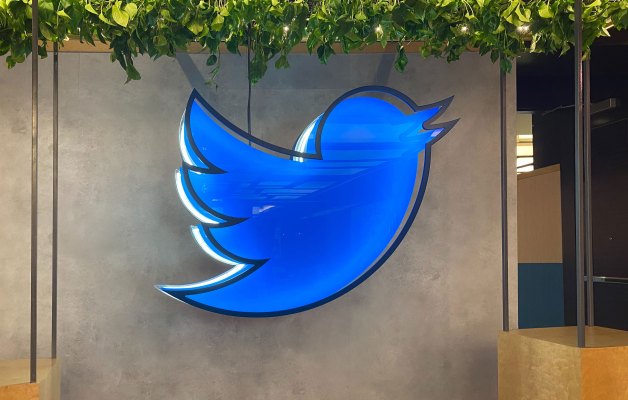As Twitter continues to try to find the right balance between making its platform easier to use while also less prone to toxicity and abuse, the social media platform reported mixed earnings for Q4. Twitter posted $1.01 billion in revenue — notable because it is the first time its revenues have broken past the billion-dollar mark — due to a strong quarter in advertising sales.
However, net income and EPS were both significant drops on the same period a year ago. Net income came in at $119 million, with a diluted earnings per share of $0.15. In comparison, a year prior in Q4 2018, Twitter made net income of $255 million with diluted EPS of $0.33. Operating income for the current Q4 was $153 million.
(Twitter’s partial explanation was the fact that it had an “income tax benefit from the release of deferred tax assets valuation allowance in the same period last year” and that without it “net income was $135 million, with adjusted net margin of 15 percent and adjusted diluted EPS of $0.17.”)
Analysts had expected revenues of $997 million (up 9.7 percent on the same quarter a year ago) with earnings per share of $0.29, slightly lower than Twitter reported in the same period a year ago. Twitter itself said in Q3 that it expected revenues to be between $940 million and $1.01 billion, with operating income between $130 million and $170 million, meaning its results were in line with what it had forecast.
Overall, the numbers paint a brighter picture after a troubled Q3, when Twitter missed both on revenues and earnings after identifying several costly advertising-related glitches.
But the company remains a bit of a rollercoaster when it comes to financials. Twitter’s forecast for next quarter is looking like it might be another challenging one in terms of margins and overall sales. Twitter’s forecasting revenue to be between $825 million and $885 million and operating income to be between $0 million and $30 million.
Part of that is because of plans that the company has for the year ahead, which include a lot more investment in technology and growing headcount by at least 20 percent this year “especially in engineering, product, design, and research.”
Twitter noted that because of this headcount growth, it expects “total costs and expenses — which include cost of revenue and all operating expenses — to grow approximately 20 percent in 2020, ramping in absolute dollars over the course of the year.” Other important weights on its expenditures include adding a new data center this year.
Turning back to Q4, monetizable daily active users — Twitter’s own metric for measuring its audience size that it introduced after finding its growth story too challenging to tell amid flat or declining overall numbers — were up by 21% in the quarter and are now at 152 million, which Twitter attributed to improvements that it made in its algorithmic timeline to present more relevant content to users (and, presumably, more promoted and sponsored Tweets), as well as improved notifications.
The numbers were up both on last quarter as well as a year ago. The company has been introducing a number of other features, like Topics, to spur more subject-based, targeted consumption of Twitter. The new product feature is part of a bigger, longer-term shift Twitter has been making to position itself not as a social network, but a place that people go to discover news, information, entertainment and more.
“I see Twitter more as an interest network [rather] than a social network,” CEO Jack Dorsey said today during the call, highlighting how that mission has been challenged by a longstanding problem at Twitter: “People come to see what’s happening in the world,” Dorsey added, but “we make them do a ton of work” to do that. The mission at Twitter for years has been to take away friction in onboarding new users, but now the idea will be to build out more features to keep users around once they have tried the app out.
A lot of experiments have been around onboarding in the past, Dorsey said, “but [they] didn’t see through to how [users] would use Twitter on a daily basis,” so the focus now is “a rich timeline but also a path to discovering more, getting [users] to a position where they feel a lot more comfortable with participating in a conversation, not just Tweeting at the world but at those with a special interest.”
Indeed, as Twitter noted in its letter to shareholders, which was posted today alongside the Q4 earnings, “Now, even if people don’t know which accounts to follow, we recommend relevant Topics so people can see the best Tweets regarding those Topics, regardless of whether they follow the person that Tweeted.”
Twitter said that as of December 31, 2019, there were more than 1,700 Topics that people could follow in six languages. Topics get suggested automatically in people’s timelines, or they can browse all Topics. Alongside those, Twitter also revamping Lists as a new kind of alternative timeline approach that can be created by other Twitter users, which Twitter also bumps up with suggestions and the ability to share lists with other users.
Apart from noting that some of the mDAU bump arose from new features on the platform, Twitter did not disclose actual engagement metrics on either Lists or Topics, except for Dorsey noting during the call that there has been “a lot of engagement early on” with the format.
Advertising remains the mainstay of the company’s revenue, totaling $885 million, up 12 percent year-over-year, with total ad engagements up 29 percent year-over-year and cost per engagement (CPE) down 13 percent year-over-year. Data licensing and other revenue totaled $123 million, up just 5 percent year-over-year. The US remains Twitter’s largest market in terms of revenue, if not audience: it generated $591 million, an increase of 17 percent year-over-year, but it accounts for just 31 million mDAUs.
More to come.
